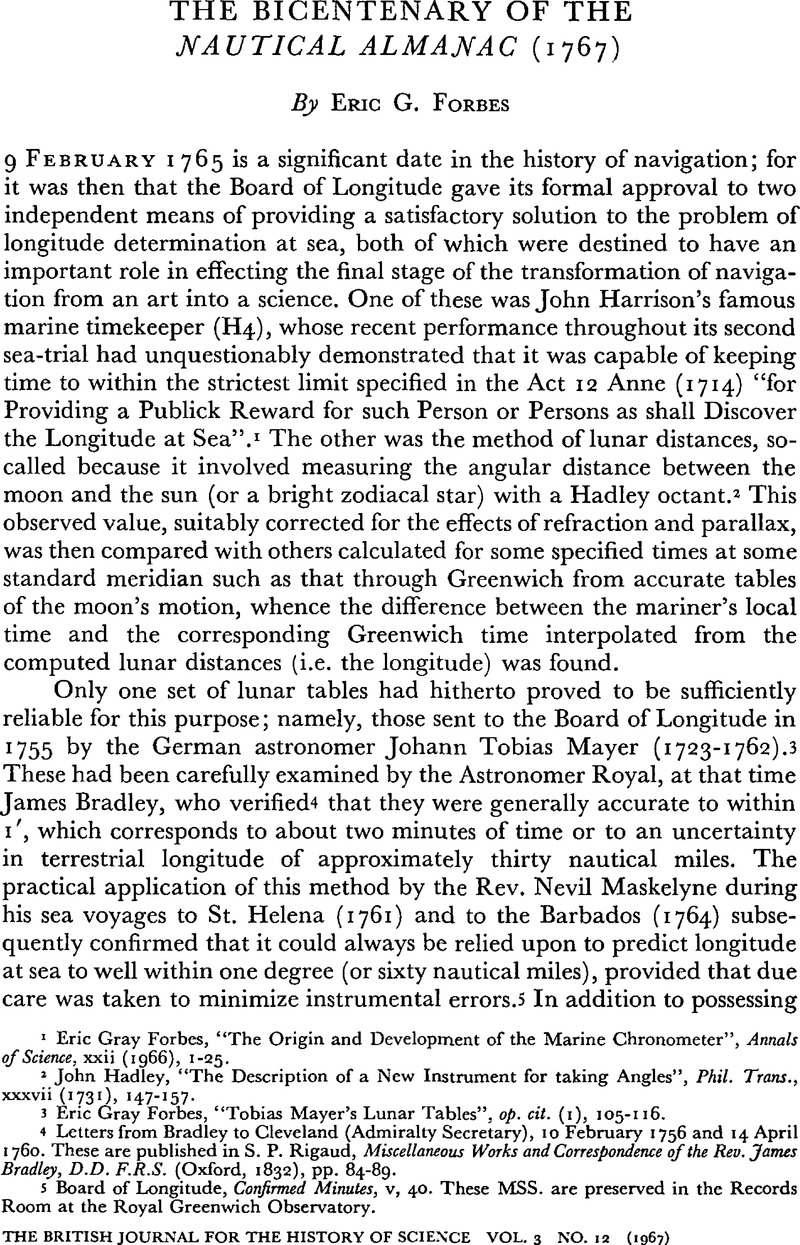Published online by Cambridge University Press: 05 January 2009

1 Forbes, Eric Gray, “The Origin and Development of the Marine Chronometer”, Annals of Science, xxii (1966), 1–25.CrossRefGoogle Scholar
2 Hadley, John, “The Description of a New Instrument for taking Angles”, Phil. Trans., xxxvii (1731), 147–157.CrossRefGoogle Scholar
3 Eric Gray Forbes, “Tobias Mayer's Lunar Tables”, op. cit. (1), 105–116.Google Scholar
4 Letters from Bradley to Cleveland (Admiralty Secretary), 10 February 1756 and 14 April 1760. These are published in Rigaud, S. P., Miscellaneous Works and Correspondence of the Rea. James Bradley, D.D. F.R.S. (Oxford, 1832), pp. 84–89.Google Scholar
5 Board of Longitude, Confirmed Minutes, v, 40. These MSS. are preserved in the Records Room at the Royal Greenwich Observatory.
6 Forbes, Eric Gray, “The Foundation and Early Development of the Nautical Almanac”, Journal of the Institute of Navigation, xviii (1965), 391–401.CrossRefGoogle Scholar
7 “A Modern View of Lunar Distances”, loc. cit. (6), xix (1966), 131–153.Google Scholar This article includes an appendix (on pp. 145–148) which was intended for use in conjunction with the Nautical Almanac for 1967 for the application of the method of lunar distances during the period in 1967 February 15–22 and August 15–22.
8 The Nautical Almanac and Astronomical Ephemeris 1767 to 1967, written by Scott, W. A., pp. 3c–3n.Google Scholar